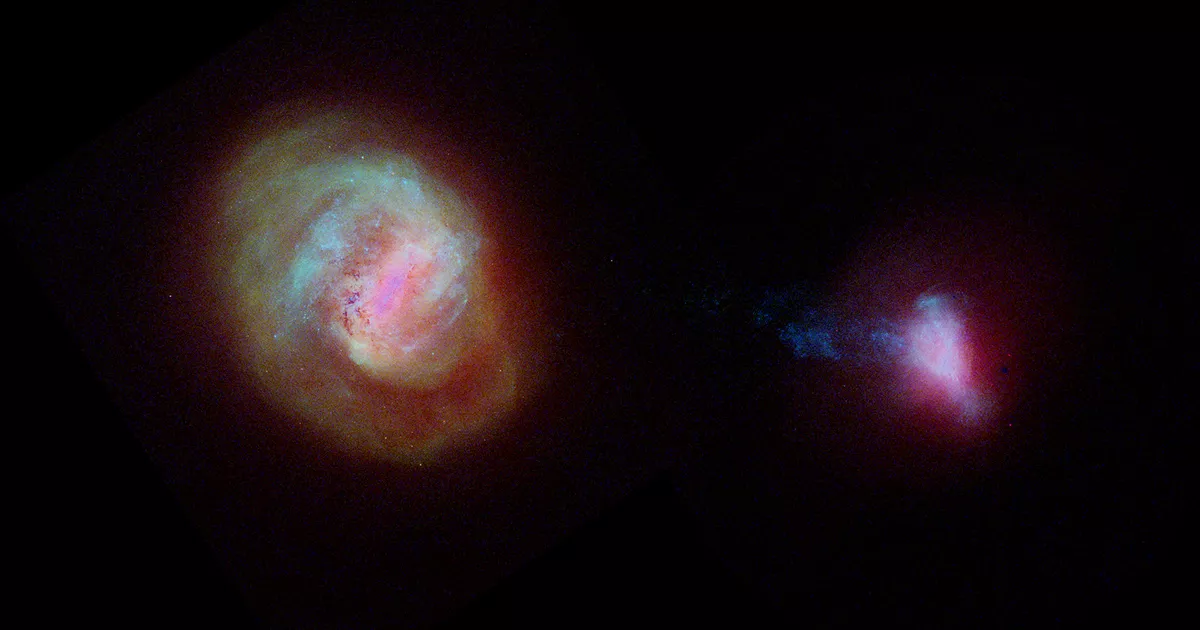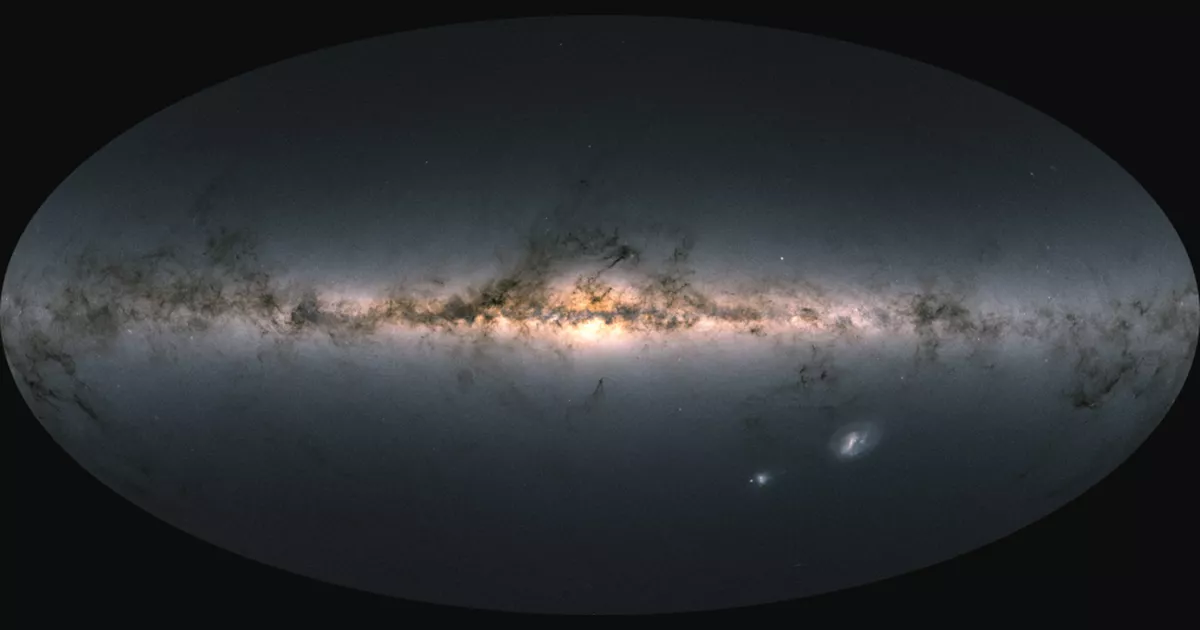Our best map of the Milky Way galaxy has been expanded with new data, including that of the Sun’s closest 300,000 neighbors. Astronomers from the ELKH Research Centre for Astronomy and Earth Sciences have contributed to this large undertaking.
Our galaxy, the Milky Way, is home to at least a hundred billion stars: any attempt to map them would appear to be ridiculously complicated. The Gaia space telescope, one of the flagship missions of the European Space Agency (ESA), however, has been working for years now to determine the positions and distances of at least a billion, or one percent of those. The space telescope has been collecting extremely accurate position and brightness measurements since 2014. European astronomers released the first large, standalone catalog from the mission in 2018, which had an instant and profound impact on stellar and galactic astronomy: the data have been used in more than 3,500 scientific articles in the two years since.
The scientific consortium behind Gaia, which consists of hundreds of researchers, has now compiled a new catalog after processing three years of measurements collected by the mission. Four astronomers from the Research Centre for Astronomy and Earth Sciences, László Molnár, Emese Plachy, László Szabados, and Elza Szegedi-Elek, contributed to the work as consortium members. Of course, just like with everything else in 2020, this project was also affected by the pandemic. Anthony Brown (Leiden University), chair of the Gaia scientific consortium, explained how the release was delayed from September: “One of the first things we did was to try to lower the overall stress level by telling people: take care of your own well-being first, and then we will worry about all the things that need to be done for the consortium. It is also why we immediately decided to postpone the release without directly giving a new target date.”
The new release was ultimately finished by December and contains more than 1.8 billion sky positions and brightness values, as well as nearly 1.5 billion distances of stars, greatly exceeding the initial goals of the mission. The way Gaia is measuring the distances of stars has already been described by the mission; here we focus on some of the first results based on the new data release.

The Sun’s 300,000 neighbors
An intimate knowledge of one’s immediate environment is important not only locally on Earth, but among the stars, too. Which is why the researchers paid close attention to mapping the Sun’s nearest neighbors out to a 100 parsecs (or 326 lightyears). One of the main challenges in this was the identification of the smallest and faintest stars: several of our neighbors are tiny red dwarf stars that would be hard to see not only with the naked eye but even with smaller telescopes. The observations revealed more than 300,000 stars in this volume of space, about ten times more than was known from previous studies. But even if we only consider stars closer than 80 lightyears (or 25 parsecs), even then the number of known stars has now doubled.
With the Gaia Catalog of Nearby Stars at hand, it is now possible to study not only the number and types of stars surrounding us, but also how they arrived here and where are they heading. Analysis of the velocities, for example, has led to the discovery of more than 16,000 co-moving binary pairs. The researchers also calculated how these stars will orbit within the Milky Way in the future. It turns out that, like the Sun, most of them go around in the disk of the galaxy. A few of them, however, are only passing by, moving on steep orbits that will soon remove them from the disk. However, every orbit is different, and the stars grouped into a small volume of space will disperse into a full circle in about 500 million years.
Future of the stars within 100 pc to the Sun today, calculated up to 500 million years. Most stars slowly disperse into a ring but some move on completely different orbits. (ESA/Gaia/DPAC, S. Payne-Wardenaar, S. Jordan and C. Reylé, CC BY-SA 3.0)
Distant realms
In this release, attention is paid not only to the nearby stars, but also to the stars at the edge of the Milky Way, and even beyond that. We have learned that the edge of the Milky Way is not some boring backwater: instead, this region is very sensitive to collisions with other galaxies. The spatial distribution and velocities of stars out here still retain the effects of these collisions. How each collision might have played out will, however, require intensive modeling work.
The history of our largest satellite galaxies, the Small and Large Magellanic Clouds, appears similarly tumultuous. With Gaia we can now map how the two galaxies rotate, and how various types of stars move within them, be those young or old, in the spiral arms or outside of them. Movement of stars streaming from the Small to the Large cloud in the Magellanic Bridge was also detected. The Gaia data will also keep theoreticians who build galaxies within computers to model their evolution well occupied.

Acceleration of the Solar System
A final result that was not even expected to happen with only 34 months of data at hand was the measurement of the acceleration of the Solar System. We have known for a long time that the Sun and its planets circle the Milky Way with a velocity of 230 km every second. Even with that speed, it takes more than 200 million years to complete one orbit. However, at what rate this velocity might be changing was a lot more difficult to detect. In the end, small shifts in the apparent positions of very bright galaxies, the most distant sources Gaia can see, made this measurement possible.
According to the results, we are accelerating directly towards the center of the Milky Way, but this doesn’t mean that we’re falling slowly towards the central black hole there: it only means that that central gravity source is bending the movement of the Sun into a nearly circular orbit. The exact value of the acceleration is mind-numbingly small: at that rate it would take a good four hundred years to reach average human running speed from standstill. Ulrich Bastian (ARI Heidelberg), lead author of this research, gave a unique perspective for this result: “The agreement of the measurement with the prior expectation is a great success of Gaia, but also a great pity. Consider the possibility that the acceleration would grossly differ from the expectation. That would be a first-class scientific sensation! But alas it fits. Thus, there is still no Nobel Prize for Gaia in sight!”

Nobel Prize aspirations aside, processing the Gaia data still require large amounts of work. The consortium, including multiple astronomers from the Research Centre for Astronomy and Earth Sciences, are already working towards the next release planned for 2022. The spacecraft itself is expected to operate until 2025, so our map of the Milky Way will continue to improve in the whole decade ahead of us.
Five scientific articles describing the results are published in the journal Astronomy & Astrophysics. Work of the Hungarian astronomers were supported by the Lendület program of the Hungarian Academy of Sciences (LP2014-17 and LP2018-7 grants), the Premium Postdoctoral Research Program of the Academy (L. Molnár) and by the Research, Development and Innovation Office (NKFIH) grant for outstanding research groups (KH_18-130405).